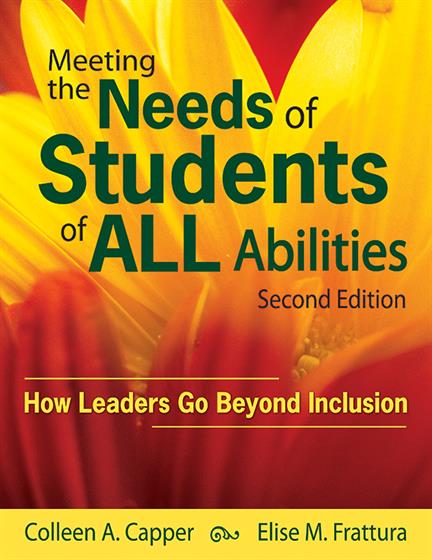List of Handouts
Preface to the Second Edition
Acknowledgments
About the Authors
Introduction
Part I. Shift From Programs to Services
1. Setting the Stage: The Social and Legal Impetus for Services Rather Than Programs in Integrated, Socially Just Schools
2. Shifting From Programs to Services: Where to Begin?
First Stage: Ask Necessary Questions
Second Stage: Establish a School Service Delivery Team to Initiate Change
Third Stage: Shift Personnel Roles to Meet Student Needs
3. Leading for Social Justice at the School and District Levels
Primary Leadership Characteristic: Inclusive Social Justice and Equity Are the Leader's Core Identity
Leading for Social Justice at the District Level
Traditional Roles of Central Office Administrators Impede Change
Transforming From Centralized Leaders to Social Justice Leaders
Part II. Establish Standards for Integrated, Socially Just Schools and Districts
4. Standards for Physical and Emotional Safety: Prerequisites for Student Success
Standard 1: Make Physical and Emotional Safety Central to All Aspects of the School
Standard 2: Establish a Culture of Inclusivity and Visibility
Standard 3: Take Harassment Seriously
Standard 4: Cocreate Antiharassment Policy and Strategies
Standard 5: Integrate Antiharassment Into the Curriculum
Examples of an Antiharassment Policy in Practice
5. Standards for Student Behavior
Standard 1: Be Conscious of How We Label Students; Student Behavior Is Relative
Standard 2: Hold High Expectations for Student Behavior in a Context of Care
Standard 3: Develop and Consistently Implement Schoolwide Discipline Policies That Have Individually Designed Consequences and Positive Incentives
Standard 4: Provide Early Intervention
Standard 5: Involve Students in All Aspects of Intervention
Standard 6: All Staff Must Understand That All Behavior Is an Attempt to Communicate
Standard 7: All Staff Must Have Similar Expectations and Strategies for Student Behavior
Standard 8: View Teaching and Learning Appropriate Behaviors as a Long-Term Process
Standard 9: Staff Must Use Proactive Strategies for Students Who Need More Intense Support
6. Quality Instruction and Assessment: The Foundation for Integrated, Socially Just Schools
Strategy 1: Focus on Instruction: Ensure That ALL Students Have Access to Quality Teaching
Strategy 2: Get It Right the First Time: Interventions and Programs Are Not the Answer
Strategy 3: Develop Teacher Capacity/Hiring
Strategy 4: All Teachers Are Experts and Shall Teach All Kids, No Magic in Student Services
Strategy 5: Reduce Student-to-Teacher Ratios and Class Size
Strategy 6: Configure Class Grouping to Meet Student Needs Without Labeling
Strategy 7: Make Early Literacy a Priority
Strategy 8: Provide Early Intervention and Prevention Without Labeling
Strategy 9: Make Curriculum Accommodations but Not as a Substitute for Skillful Teaching
Strategy 10: Use Teaching Assistants With Caution
Strategy 11: Begin With the End in Mind
Frequently Assess to Measure Student Progress and to Inform Instruction
Dos and Don'ts When Addressing High-Quality Instruction
Part III. Leverage Law, Funding, and Student Differences Toward Critical Transformative Change
7. Leveraging the Law and Funding Toward Integrated, Socially Just Schools
How Educators Can Use the Law to Leverage an Integrated, Socially Just Education
Reallocating Resources for Integrated, Socially Just Schools
8. Toward Integrated, Socially Just Schools: A Framework for Change
Determining the Locus of Control
A Dual Approach to Change
One Framework for Equity and Social Justice Change
Resource A: Equity Audit Data Collection and Analysis
Resource B: Reference Material for Service Delivery Teams
Resource C: Malcolm Shabazz City High School
References
Index




